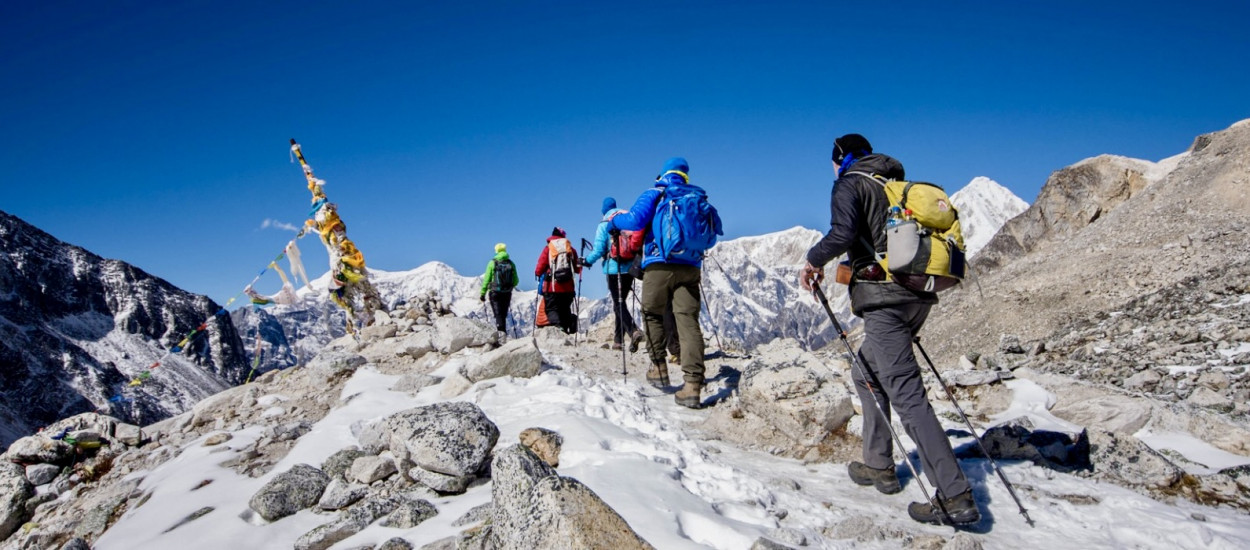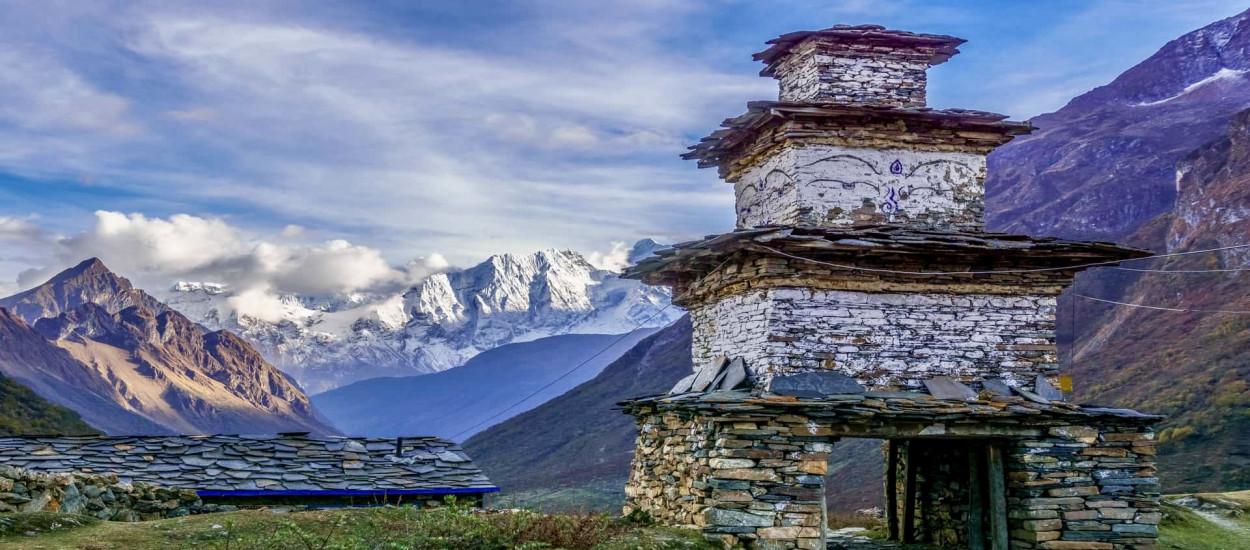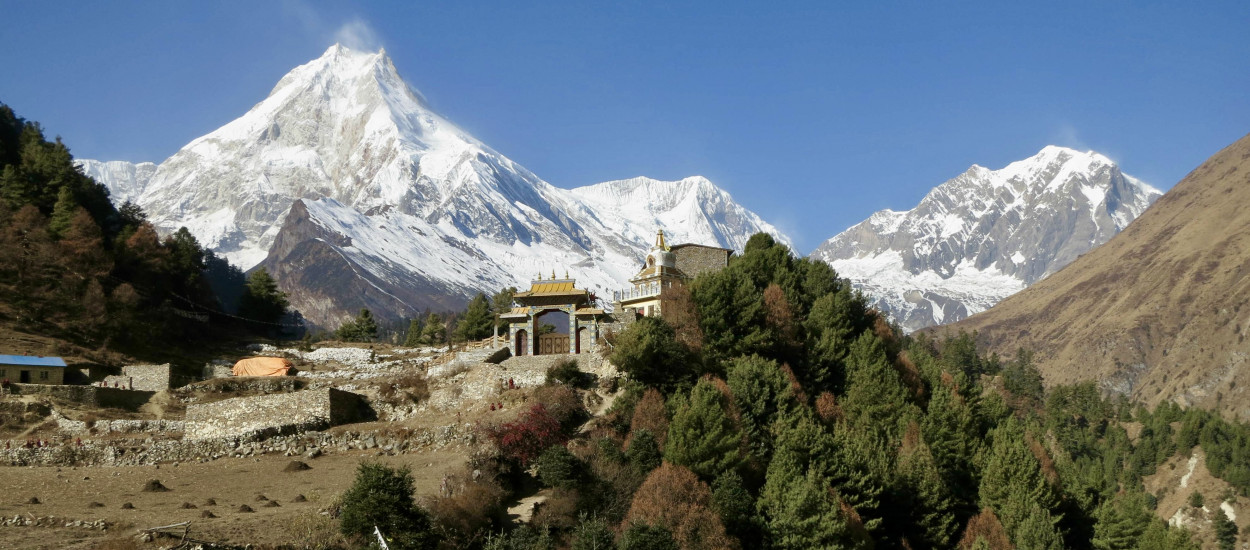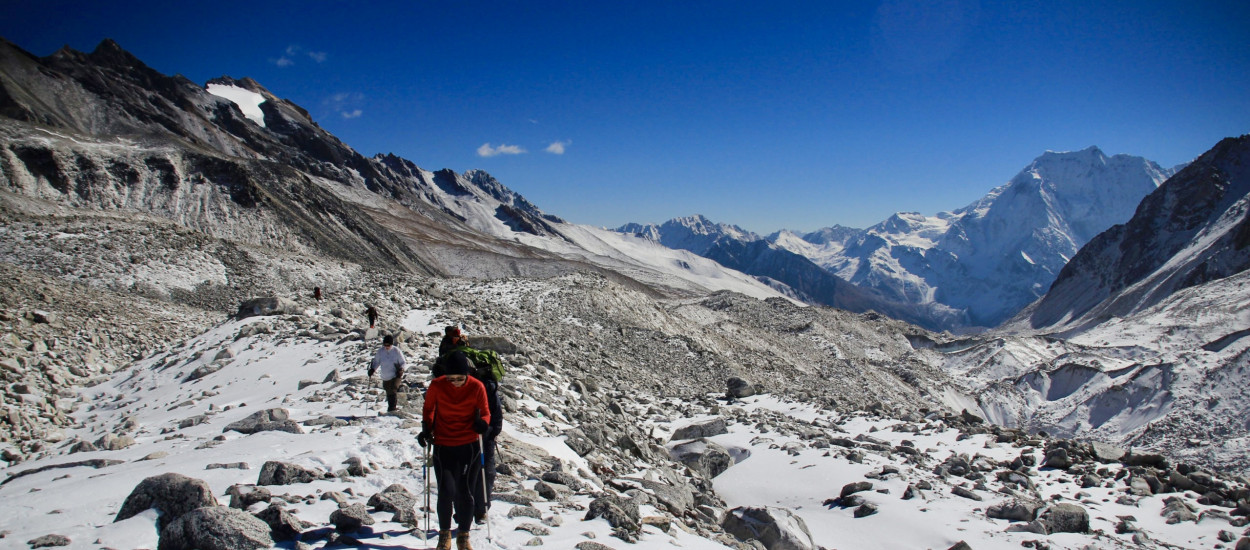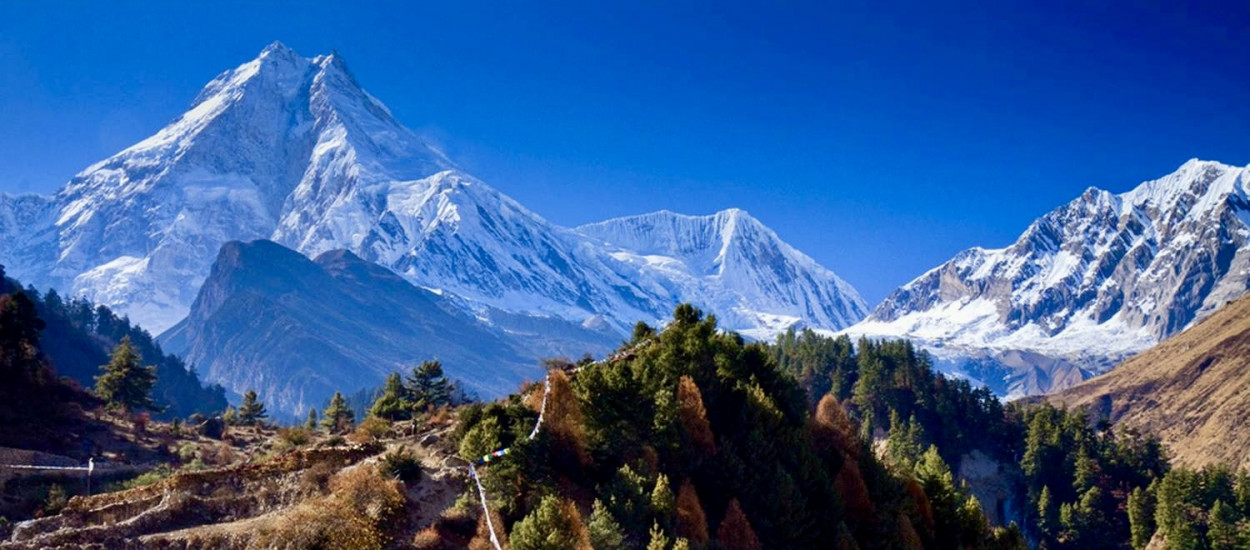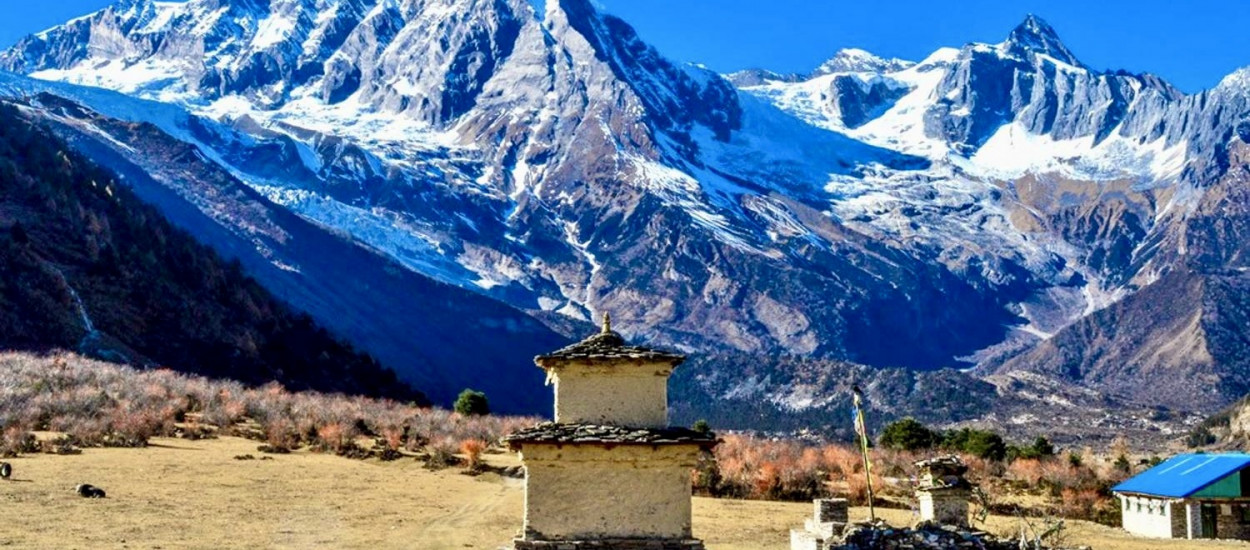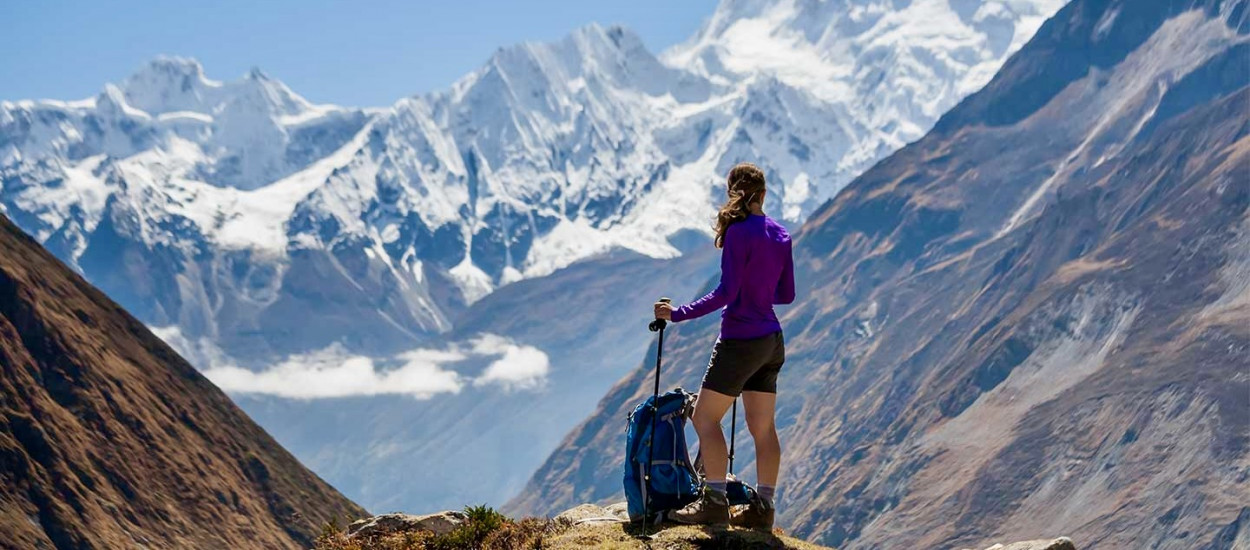Good to Know
Altitude during the Manaslu Circuit Trek
The Manaslu Circuit Trek is an exhilarating journey through varying altitudes, offering trekkers the chance to experience the dramatic changes in landscape and climate that characterize the Nepalese Himalayas. Understanding the altitude profile of this trek is crucial for preparation and acclimatization, ensuring a safe and enjoyable experience.
Key Altitudes of the Manaslu Circuit Trek
-
Soti Khola: The trek typically starts at Soti Khola, which sits at about 700 meters (2,296 feet).
-
Maccha Khola: The trail ascends to Maccha Khola at 930 meters (3,051 feet).
-
Jagat: Further along, you reach Jagat at an elevation of 1,410 meters (4,625 feet).
-
Deng: Climbing higher, trekkers reach Deng at around 1,800 meters (5,906 feet).
-
Namrung: Namrung, a step further into the trek, is at 2,630 meters (8,626 feet).
-
Samagaon: One of the higher villages, Samagaon is situated at 3,530 meters (11,581 feet).
-
Samdo: Close to the Tibetan border, Samdo is located at 3,860 meters (12,660 feet).
-
Dharamsala/Larkya Phedi: Just before the major pass, Dharamsala, also known as Larkya Phedi, stands at 4,460 meters (14,632 feet).
-
Larkya La Pass: The highest point of the trek, Larkya La Pass, reaches an impressive 5,106 meters (16,752 feet).
-
Bimthang: After crossing the pass, you descend to Bimthang, located at 3,590 meters (11,778 feet).
-
Dharapani: The trek concludes for many at Dharapani, which lies at 1,960 meters (6,430 feet).
By understanding and respecting the altitude demands of the Manaslu Circuit Trek, adventurers can fully embrace the natural splendor and cultural richness of this unforgettable Himalayan trek.
Porter Service the Manaslu Circuit Trek
Using porter services on the Manaslu Circuit Trek significantly enhances the trekking experience. Porters can carry up to 25 kg of your gear, allowing you to trek with just a lightweight daypack. This support not only eases the physical strain of carrying heavy loads but also enriches your journey with local insights and safer navigation through challenging terrains.
Key Benefits of Hiring Porters
-
Lightens your load for better endurance and enjoyment.
-
Supports local employment, as most porters are from nearby villages.
-
Provides safety and guidance with their knowledge of the terrain and weather.
-
Facilitates cultural interaction, offering deeper insights into local life.
Considerations
-
Ensure porters are treated fairly, with proper gear and load limits.
-
Costs are generally reasonable and often shared within a group.
-
Tipping is customary to show appreciation after the trek.
Porters can be hired through reputable trekking companies, which ensures they are adequately insured and treated ethically. This service not only makes your trek more manageable but also supports local communities and enhances your cultural experience on the Manaslu Circuit.
Permits for the Manaslu Circuit Trek
For trekkers aiming to explore the Manaslu Circuit Trek, obtaining the necessary permits is a crucial step in the preparation process. Due to its location in a protected area and its proximity to the Tibetan border, the Manaslu Circuit Trek requires several specific permits designed to regulate tourism and protect the natural and cultural heritage of the region.
Required Permits for the Manaslu Circuit Trek
-
Manaslu Conservation Area Permit (MCAP): This permit is required to enter the Manaslu Conservation Area. It helps fund conservation efforts and maintain the trails and facilities within the area.
-
Annapurna Conservation Area Permit (ACAP): Since the trek crosses over into parts of the Annapurna Conservation Area, this permit is also necessary.
-
Restricted Area Permit (RAP): The Manaslu region is designated as a restricted area due to its proximity to the Chinese border. This permit is required for the protection and regulation of the sensitive border area.
Obtaining the Permits
-
Where to Obtain: The MCAP and ACAP can be obtained in Kathmandu at the Nepal Tourism Board office or in Pokhara. The RAP must be arranged through a registered trekking company as independent trekking is not allowed in the restricted areas of Manaslu.
-
Cost: The cost of these permits varies depending on the season. The RAP, for example, is priced differently during the high season (September to November) compared to the rest of the year. The exact fees can be confirmed through official channels or your chosen trekking agency.
-
Group Requirements: To obtain the RAP, trekkers must be in a group of at least two people and must be accompanied by a licensed guide. Solo trekkers often team up with others to meet this requirement.
-
Documents Needed: Applicants will need to provide passport copies, passport photos, and other necessary documentation as specified by the issuing authority.
Why the Permits Are Important: The permits not only regulate access to protect the environment and communities within these conservation areas but also contribute to the local economy through the fees collected. Ensuring you have the correct permits is not only a legal requirement but also a way to support sustainable tourism practices in the region.
By securing these permits, trekkers ensure their compliance with local regulations and contribute to the preservation and sustainable development of the Manaslu Circuit Trek. Always plan to obtain these permits well in advance of your trek to avoid any complications on your journey.
Preparation for the Manaslu Circuit Trek
Preparing for the Manaslu Circuit Trek requires careful planning and consideration to ensure a safe and enjoyable experience. This trek is challenging due to its remote location, high altitudes, and the physical demands of the journey. Here’s a guide on how to best prepare for this adventure:
Physical Preparation
-
Training: Start a training regimen months before your trek. Focus on cardiovascular fitness through running, cycling, or swimming. Strengthen your legs with hiking, stair climbing, and leg-strengthening exercises.
-
Acclimatization: Plan for proper acclimatization days within your trek itinerary to reduce the risk of altitude sickness. Familiarize yourself with altitude sickness symptoms and treatments.
Gear and Equipment
-
Clothing: Pack layers to accommodate varying temperatures, including thermal base layers, a fleece jacket, and a waterproof and windproof outer layer.
-
Footwear: Invest in a good pair of waterproof trekking boots that are well broken-in to avoid blisters.
-
Backpack: A comfortable, fitting backpack with a rain cover is essential. For those hiring a porter, a daypack is sufficient for personal items.
-
Other Essentials: Include a sleeping bag suitable for sub-zero temperatures, a headlamp, trekking poles, sunscreen, water purification tablets, and a first-aid kit.
Permits and Documentation
-
Visa: Ensure your passport is valid for at least six months beyond your planned return date and obtain a Nepali visa, which can be acquired on arrival in Kathmandu.
-
Trekking Permits: You will need the Manaslu Conservation Area Permit (MCAP), Annapurna Conservation Area Permit (ACAP), and the Restricted Area Permit (RAP). These must be arranged through a registered trekking agency.
Travel Insurance
Mental Preparation
-
Research: Read about the trek, understand the challenges, and set realistic expectations about daily trekking durations and living conditions.
-
Cultural Sensitivity: Learn about local customs and cultural norms to ensure respectful interactions with the local communities.
Logistics
-
Hiring Guides and Porters: Consider hiring a guide and porters through a reputable trekking agency. They provide essential support and enhance safety on the trek.
-
Communication: Plan for limited connectivity. Rent a satellite phone or ensure you have access to communication facilities via your guide.
Proper preparation for the Manaslu Circuit Trek enhances your ability to successfully complete this rewarding journey through one of Nepal’s most stunning and remote regions.
Accommodations and Meals during the Manaslu Circuit Trek
During the Manaslu Circuit Trek, accommodations and meals reflect the remote and rustic nature of the region. Understanding what to expect in terms of where you'll stay and what you'll eat can help you prepare better for this immersive trekking experience.
Accommodations
-
Teahouses: The primary form of accommodation along the Manaslu Circuit are teahouses. These are small, family-run lodges that offer basic but comfortable rooms. Teahouses typically provide shared bathroom facilities, and in some locations, you might find options with attached bathrooms, although these are less common.
-
Rooms: Accommodations are usually very basic, with twin beds, a small table, and sometimes a wooden cupboard. It is a good idea to bring your own sleeping bag, even though blankets are usually provided, as temperatures can drop significantly at night.
-
Amenities: The amenities in teahouses are minimal. Electricity might be available, but power outages are common. Some teahouses offer hot showers for a small fee, and WiFi might be available in some places, also typically at a cost.
Meals
-
Dining: Meals are served in a communal dining area in the teahouse, which is also a warm place to socialize with other trekkers and locals in the evening.
-
Food Options: The menu in teahouses along the Manaslu Circuit is surprisingly varied, offering both Nepali and Western dishes. Common meals include traditional Nepali dal bhat (rice and lentils) which is replenishing and served with vegetable curry and pickle, making it a filling option that many trekkers enjoy repeatedly.
-
Breakfast choices often include porridge, eggs, and pancakes. For lunch and dinner, besides dal bhat, options may include momo (dumplings), pasta, and even pizza in some places. Soups are common and can be a good way to stay hydrated.
-
Drinks: Safe drinking water is available, and it’s advisable to carry water purification tablets or a water filter to avoid buying bottled water, which contributes to waste. Tea, coffee, and hot chocolate are also widely available.
Special Dietary Needs
-
If you have specific dietary requirements, it's advisable to inform your guide or the teahouse owner in advance. While the options might be limited, teahouse cooks are often willing to accommodate special dietary needs as best as they can.
Cultural Considerations
-
Etiquette: It's important to be respectful of local customs and practices, especially when dining or interacting with your hosts in the teahouses. Always ask permission before taking photos, and be polite and patient with service as resources are limited in these remote areas.
Accommodations and meals on the Manaslu Circuit Trek are part of the adventure, offering a chance to experience the local hospitality and savor traditional Nepali cuisine amidst some of the world’s most stunning landscapes. Properly preparing for what to expect in terms of living and dining conditions can greatly enhance the overall trekking experience.
Transportation and Flights on Manaslu Circuit Trek
For trekkers embarking on the Manaslu Circuit Trek, understanding the logistics of transportation and flights to and from the region is crucial for smooth travel planning. The journey to the starting point of the trek and back to Kathmandu involves a combination of road transport and, potentially, local flights, depending on your itinerary.
Getting to the Manaslu Circuit
- International Arrival: Most international visitors arrive at Tribhuvan International Airport in Kathmandu, the only international airport in Nepal. From Kathmandu, the journey to the trek's starting point begins by road.
Road Transport to Soti Khola
-
From Kathmandu to Soti Khola: The trek traditionally starts at Soti Khola. Getting there involves a drive from Kathmandu, which usually takes about 7-8 hours. The journey is often undertaken in a private jeep or a local bus, depending on the package booked with your trekking company. The road conditions vary, with the latter part being rough and often unpaved.
-
Alternative Start from Arughat: Some trekkers might start from Arughat, slightly further along the same route, which can also be reached directly by bus or jeep from Kathmandu.
Transportation During the Trek
- Once on the trail, the primary mode of transportation is walking. There are no internal flights or vehicular transport options once you start the trek until you exit the trail at Dharapani or Besisahar.
Return to Kathmandu
- From Dharapani or Besisahar to Kathmandu: At the end of the trek, you will either be in Dharapani or continue to Besisahar. From either location, trekkers typically return to Kathmandu by road. The drive from Besisahar to Kathmandu takes approximately 6-7 hours on a paved road and is more comfortable compared to the route to Soti Khola.
Possible Flight Options
- Pokhara as an Alternative Route: For those interested in exploring more of Nepal, a detour to Pokhara from Besisahar is a viable option. From Pokhara, flights back to Kathmandu are available multiple times daily, offering a scenic 25-minute flight across the Himalayas. This can be a more comfortable and quicker alternative to road transport.
Booking and Travel Tips
-
Booking Transportation: It’s advisable to arrange all transport through a reputable trekking agency. They can handle the logistics of road transfers, ensuring that vehicles are reliable and drivers are experienced with the local terrain.
-
Travel Insurance: Ensure your travel insurance covers travel delays and cancellations, especially if you opt to include domestic flights in your travel plans.
-
Packing for Transport: Since the road sections can be bumpy and dusty, protect your luggage and electronic devices accordingly. Pack essentials like water, snacks, and a first aid kit within easy reach during the drive.
By planning your transportation thoroughly, from arrival in Nepal through to the end of your trek, you can ensure a more focused and enjoyable hiking experience on the Manaslu Circuit Trek, without the stress of navigating complex travel arrangements in a remote area.
Nepal Visa for the Manaslu Circuit Trek
For international trekkers planning to undertake the Manaslu Circuit Trek, obtaining a Nepal visa is a necessary step before arriving in the country. The process is straightforward, and visas can be conveniently acquired upon arrival or in advance through an embassy or consulate.
Visa on Arrival
-
Arrival in Nepal: Most international visitors will land at Tribhuvan International Airport in Kathmandu, where visa on arrival facilities are available.
-
Documentation Required: To obtain your visa, you will need a passport valid for at least six months beyond the date of your entry into Nepal, a visa application form (available at the airport or online prior to travel), and a passport-sized photo. If you don’t have a photo, there’s a facility at the airport that can take one for a small fee.
-
Fees: The visa fee depends on the length of your stay. As of the latest updates, a 15-day visa costs $30 USD, a 30-day visa is $50 USD, and a 90-day visa is $125 USD. These fees must be paid in cash. Although USD is preferred, other major currencies are also accepted.
Applying in Advance
-
Embassy or Consulate Application: If you prefer to have everything arranged before traveling, you can apply for a Nepal visa at a Nepalese embassy or consulate in your home country. The requirements are generally the same, but applying in advance might provide peace of mind, especially if your travel itinerary is tight.
-
Online Application: Nepal also offers an online visa application system where travelers can apply for their visa and save time upon arrival by using the fast-track lane. Visit the official website of the Department of Immigration, Nepal, to fill out the application and print the submission receipt to bring along with other required documents to the airport.
Special Considerations for the Manaslu Circuit
-
Restricted Area Permit (RAP): Besides the regular tourist visa, trekkers to the Manaslu region must obtain a Restricted Area Permit due to its proximity to the Tibetan border. This permit has to be arranged through a registered trekking agency in Nepal and requires a group of at least two trekkers accompanied by a licensed guide.
Tips for Visa Application
-
Currency for Visa Fee: Ensure you carry the exact amount in clean, unmarked, and undamaged currency notes to avoid any inconvenience at the payment counter.
-
Visa Extension: If you wish to extend your stay beyond the initial visa duration, you can apply for a visa extension at the Department of Immigration in Kathmandu or Pokhara. A fee is charged per additional day.
Obtaining a Nepal visa is a simple process that can be completed upon arrival or in advance, depending on your preference. Ensure you have all the necessary documents and correct visa fees to facilitate a smooth entry, allowing you to focus on the breathtaking experiences awaiting you on the Manaslu Circuit Trek.
Safety on Manaslu Circuit Trek
Ensuring safety on the Manaslu Circuit Trek is paramount, given its remote location, challenging terrain, and the high altitudes involved. Here are several key considerations and tips to help trekkers stay safe and enjoy a trouble-free hiking experience:
Hire Experienced Guides and Porters
- Local Expertise: Always trek with an experienced guide and porters who are familiar with the Manaslu Circuit. They can navigate safely through the terrain, manage logistics, and communicate with local inhabitants. Their knowledge is invaluable, especially if you encounter any difficulties.
Acclimatization and Altitude Sickness
-
Prevent Altitude Sickness: The trek reaches altitudes over 5,000 meters, where the risk of altitude sickness is significant. It’s crucial to include acclimatization days in your itinerary, understand the symptoms of altitude sickness, and know when to seek help or descend to a lower altitude.
-
Acclimatization Days: Incorporate sufficient rest days, particularly in higher locations like Samagaon and Samdo, to allow your body to adjust to the altitude.
Weather Considerations
-
Stay Informed: Weather in the Himalayas can change rapidly. Stay updated on weather forecasts and plan accordingly. Avoid trekking during the monsoon season when trails are slippery and landslides are more frequent.
-
Appropriate Clothing and Gear: Pack and wear suitable clothing that can handle a variety of weather conditions — waterproof, windproof, and thermal gear are essential. Ensure your trekking boots are well-broken-in to prevent blisters.
Medical Supplies and First Aid
-
First Aid Kit: Carry a comprehensive first aid kit equipped with treatment options for common ailments, such as headaches, gastrointestinal issues, cuts, and bruises, as well as medications for altitude sickness.
-
Travel Insurance: Obtain a travel insurance policy that covers high altitude trekking and includes emergency evacuation and medical treatment.
Trail Safety
- Stay on Marked Trails: The Manaslu Circuit can be treacherous in places with risks of falls or losing your way. Always stick to marked trails and follow your guide’s advice, especially on narrow paths and during river crossings.
Communication
- Communication Devices: Cell service can be unreliable or non-existent in remote parts of the trek. Consider renting a satellite phone or ensuring your guide has one for emergencies.
Environmental Hazards
- Be Aware of Natural Hazards: Be cautious of natural hazards such as falling rocks, ice, and swift river crossings. Follow the lead of your guide to navigate these safely.
Respect Local Customs and Regulations
- Cultural Sensitivity: Be aware of and respect local customs. This not only ensures a harmonious interaction with host communities but also enhances your trekking experience.
By prioritizing safety through preparation, informed choices, and respectful trekking practices, you can ensure that your experience on the Manaslu Circuit Trek is not only memorable but also secure. This approach allows trekkers to fully engage with the natural beauty and cultural richness of the Himalayas while minimizing risks.
Trip Extensions on Manaslu Circuit Trek
For those embarking on the Manaslu Circuit Trek and looking to extend their adventure beyond the typical itinerary, there are several compelling options that enhance the experience with additional cultural insights, natural wonders, and trekking challenges. Considering trip extensions can turn a standard trek into a more comprehensive exploration of Nepal’s diverse landscapes and rich heritage.
-
Tsum Valley: Cultural and Scenic Extension: The Tsum Valley is a serene and spiritually significant area known for its ancient Buddhist monasteries and pristine alpine scenery. Adding a detour to Tsum Valley enriches your trek with peaceful trails and a deeper understanding of Tibetan Buddhist culture. The valley is renowned for its hospitality and the preserved lifestyle of the Tsum people.
-
Annapurna Circuit: Combined Trekking Experience: For a truly epic journey, consider linking the Manaslu Circuit Trek with the Annapurna Circuit. This extension involves crossing over from Dharapani, which is a common endpoint for the Manaslu trek, and continuing onto the Annapurna trail. This combined trek offers a diverse array of landscapes, from the lush rhododendron forests to the arid regions of Mustang.
-
Pokhara: Relaxation and Sightseeing: After completing the Manaslu trek, a few days in Pokhara offer a perfect respite. Known for its laid-back atmosphere, beautiful lakes, and stunning mountain views, Pokhara provides opportunities for boating, paragliding, or simply relaxing at a lakeside café. Additionally, the city is rich in cultural attractions such as temples, museums, and vibrant local markets.
-
Kathmandu Valley: Cultural Exploration: Extending your trip to include more time in the Kathmandu Valley is ideal for delving into Nepal’s historical and architectural marvels. Explore UNESCO World Heritage Sites like the Kathmandu Durbar Square, Patan Durbar Square, and Bhaktapur Durbar Square. Each site offers unique insights into the history, architecture, and daily life of the Nepali people.
-
Chitwan National Park: Wildlife Adventure: If you’re interested in wildlife and nature, a visit to Chitwan National Park can provide a thrilling contrast to high-altitude trekking. The park is one of Nepal’s premier wildlife reserves and offers the chance to see rhinos, elephants, and if you're extremely lucky, the Bengal tiger. Safari tours can be conducted on foot, by jeep, or even on elephant back.
Each of these trip extensions not only adds variety to your Manaslu Circuit Trek but also deepens your engagement with Nepal’s natural beauty and cultural richness. By planning additional days into your itinerary, you can explore more thoroughly and return home with a fuller, richer experience of what Nepal has to offer.
Tipping for Manaslu Circuit Trek
Tipping is a customary practice at the end of the Manaslu Circuit Trek and is an important way to show appreciation to your guides and porters who have assisted you throughout the challenging journey. Understanding the norms for tipping can help trekkers prepare adequately and ensure fair compensation for the hard work and dedication of their trekking crew.
Tipping Guidelines
-
General Advice: While tipping is not mandatory, it is highly appreciated in the trekking community. Tips should reflect the quality of service received, the duration of the trek, and the trekker's satisfaction with their experience.
-
How Much to Tip: A common guideline is to allocate around 10-15% of the total cost of the trek for tips. This total amount is then divided among the guide, assistant guide, and porters.
-
Distribution of Tips: It is recommended to tip the lead guide a little more than the assistant guides or porters, as their role is typically more comprehensive in terms of responsibilities. For instance, if the total tip pool is $200 for a 10-day trek, you might give $80 to the guide, $50 to the assistant guide, and $35 to each porter.
When and How to Tip
-
When to Tip: The best time to tip is at the end of the trek. It's preferable to hand out tips in person to each crew member to show your gratitude directly.
-
Currency: Tips should be given in local currency (Nepalese Rupees) to avoid any inconvenience to the crew in exchanging money. Ensure you have enough cash before departing Kathmandu, as ATMs are scarce and often unreliable in remote trekking areas.
Considerations for Large Groups
Cultural Sensitivity
Respect and Dignity: While tipping is customary, it’s important to maintain respect and dignity when handing out tips. Place the money in an envelope and thank each crew member personally for their support and hard work.
Tipping is a valuable practice on the Manaslu Circuit Trek that not only rewards the crew for their invaluable service but also reflects the trekkers' acknowledgment of the challenges the crew faces in ensuring a safe and enjoyable trek experience.
For more information, please follow the link More Info.
